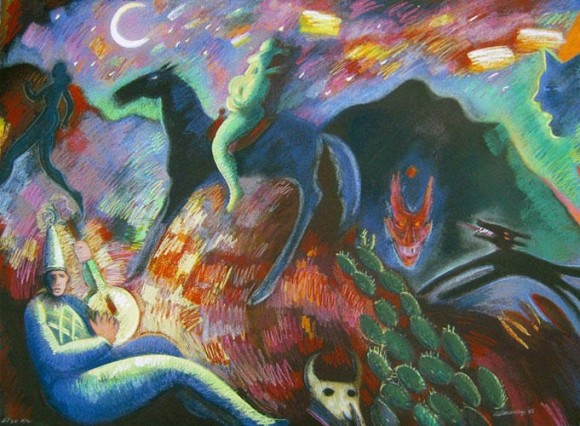Screenprinting
March 14, 2016
Some of the Escalette Collection’s most fantastic pieces belong to the medium of screenprinting, and while that might ring a bell for some, to others the process is a total mystery. As the infant of the printmaking family, it only became a technique used in fine art during the mid-1930s, unlike to other printmaking methods such as lithography or woodcuts, which have been around since the 18th century. So how exactly does one screenprint?

Masami Teraoka, Detail of “31 Flavors Invading Japan: French Vanilla”, Screenprint, 1977, Gift of Den Lau Estate
A screenprint, also known as a serigraph, is produced by a combination of stenciling and pushing ink through a screen. The stencil can be made and attached to the screen or it can be formed directly on the screen. After this, the screen is attached to some kind of support, most commonly a table, and the ink is then pushed through the screen and stencil with a special type of squeegee.
The process of stenciling is relatively straight forward, but there are three types of stencils that can change how the finished design looks: paper stencils (a thin paper attached to the screen), profilm/hand-cut film (this strong material is carved out with a cutting knife which allows greater detail than the paper stencil method) and negative liquid stencils (no cutting is involved here, instead the negative space of the design is covered on the screen with liquid blockout and the rest is inked as usual). Stencils can be layered on top of one another, punctured to allow ink through at certain points, or even worn down in places so that ink seeps through as more of a film, allowing the artist to create variations within a single print. In addition to this, multiple stencils can be combined with one another to create different effects. Only one color at a time can be applied with screenprinting and stenciling and large prints are most commonly made from various stencils rather than a single large one. The artist is forced to think in parts about how to combine various shapes, colors and textures, and this change in process is part of what makes screenprinting such a fascinating medium!




